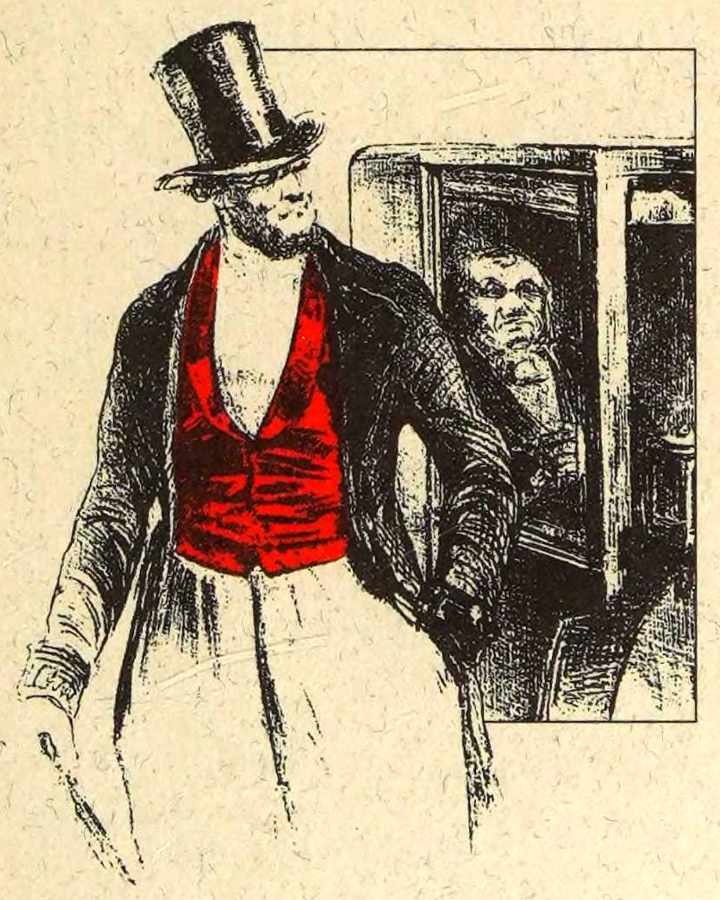Monsieur Lecoq was an agent of the Sureté (the French equivalent of Scotland Yard). He was a brilliant detective, capable of making incredible deductions from the smallest of clues. He was methodical and scientific, a student of the methods of Tabaret, a retired master detective who sometimes aided Lecoq from the comfort of his bed. Monsieur Lecoq’s children are Constant, Louis (later Louis Lecoq de Gentilly), Jean or Jeanne (the future criminal Ballmeyer), and Lucien, who becomes a police officer. After he retired from the police, he lived under the name Muret, until he was murdered in the Batignolles. His last words were “Three, the Three!” Lecoq’s daughter was able to solve the murder, using her father’s hidden memoirs. Notes: The name Lecoq means “The Rooster.” In the first Sherlock Holmes story, A Study in Scarlet (1887), Dr. Watson compares Holmes to Monsieur Lecoq, which Holmes shows disgust towards, remarking: “Lecoq was a miserable bungler. He had only one thing to recommend him, and that was his energy. That book made me positively ill. The question was how to identify an unknown prisoner. I could have done it in twenty-four hours. Lecoq took six months or so. It might be made a text-book for detectives to teach them what to avoid.”
| Alias Monsieur Lecoq |
| Real Names/Alt Names Victor Lecoq |
| Characteristics Hero, Detective, Police, International Society of Infallible Detectives, Literary Characters, Wold Newton Universe, Bird-themed, Realism and Victorian Age, French |
| Creators/Key Contributors Émile Gaboriau |
| First Appearance L’Affaire Lerouge (The Lerouge Affair, 1866) |
| First Publisher ○ |
| Appearance List Literary: L’Affaire Lerouge (The Lerouge Affair, 1866), Le Crime d’Orcival (The Mystery of Orcival/Crime at Orcival, 1867), Le Dossier No. 113 (File No. 113/Dossier No. 113/The Blackmailers, 1867), Les Esclaves des Paris (The Slaves of Paris, 1868), Monsieur Lecoq (1869), “Une Disparition” in Le Petite Vieux des Batingoles (“A Disappearance” in The Little Old Man of Batignoles, 1876), Le Vieillesse de Monsieur Lecoq (The Old Age of Monsieur Lecoq, 1878) by Fortune du Boisgobey, La Fille de M. Lecoq (The Daughter of Monsieur Lecoq, 1886) by William Busnach and Henri Chabrillat, File No. 114: A Sequel to File No. 113 (1886) by Ernest A. Young. Film: Monsieur Lecoq (1914), Monsieur Lecoq (1915), The Family Stain (1915). |
| Sample Read Monsieur Lecoq [PG] |
| Description Monsieur Lecoq was an agent of the Sureté (the French equivalent of Scotland Yard). He was a brilliant detective, capable of making incredible deductions from the smallest of clues. He was methodical and scientific, a student of the methods of Tabaret, a retired master detective who sometimes aided Lecoq from the comfort of his bed. Monsieur Lecoq’s children are Constant, Louis (later Louis Lecoq de Gentilly), Jean or Jeanne (the future criminal Ballmeyer), and Lucien, who becomes a police officer. After he retired from the police, he lived under the name Muret, until he was murdered in the Batignolles. His last words were “Three, the Three!” Lecoq’s daughter was able to solve the murder, using her father’s hidden memoirs. Notes: The name Lecoq means “The Rooster.” In the first Sherlock Holmes story, A Study in Scarlet (1887), Dr. Watson compares Holmes to Monsieur Lecoq, which Holmes shows disgust towards, remarking: “Lecoq was a miserable bungler. He had only one thing to recommend him, and that was his energy. That book made me positively ill. The question was how to identify an unknown prisoner. I could have done it in twenty-four hours. Lecoq took six months or so. It might be made a text-book for detectives to teach them what to avoid.” |
| Source Monsieur Lecoq – Public Domain Super Heroes Wiki |

